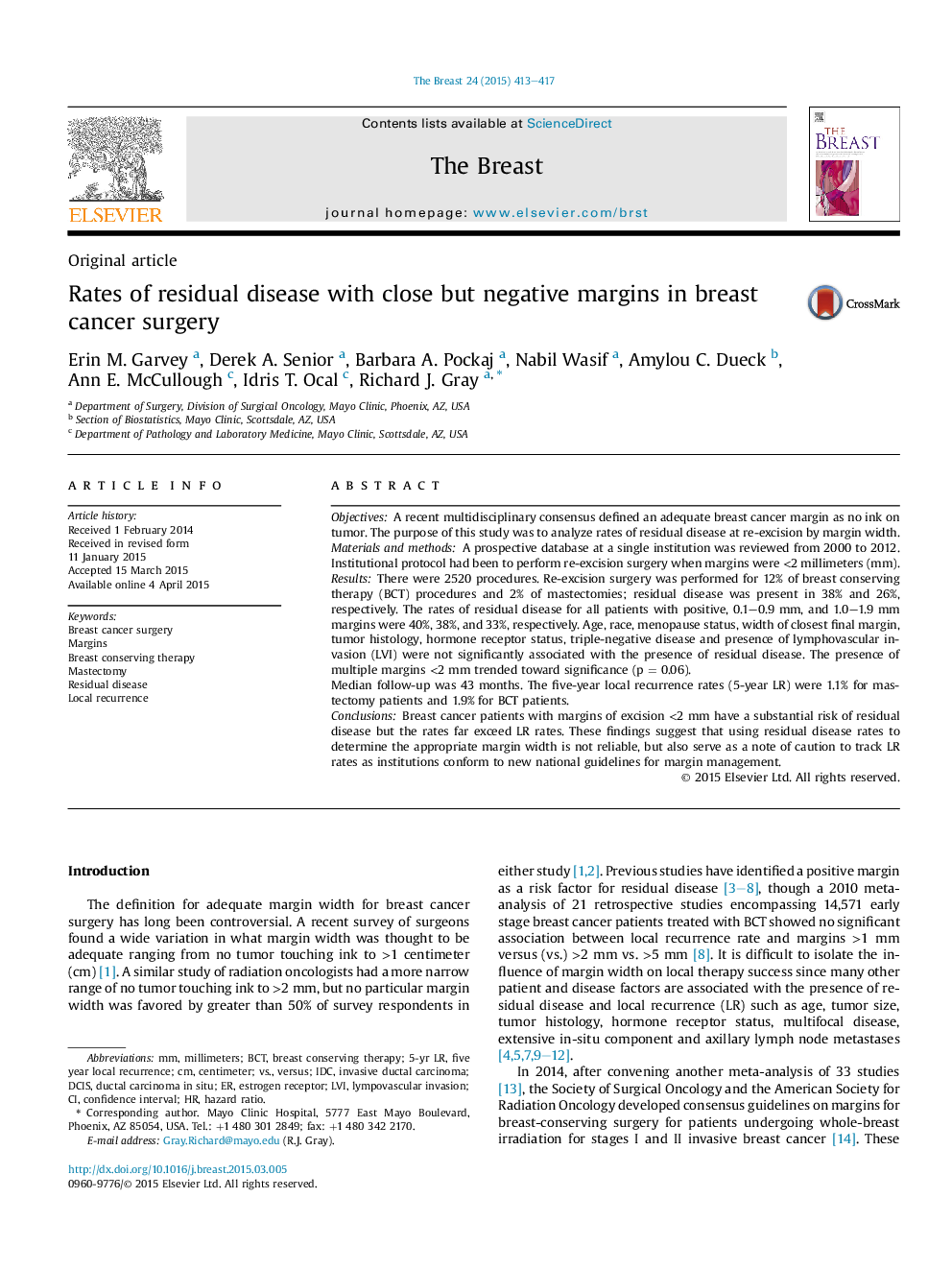| Article ID | Journal | Published Year | Pages | File Type |
|---|---|---|---|---|
| 6169602 | The Breast | 2015 | 5 Pages |
ObjectivesA recent multidisciplinary consensus defined an adequate breast cancer margin as no ink on tumor. The purpose of this study was to analyze rates of residual disease at re-excision by margin width.Materials and methodsA prospective database at a single institution was reviewed from 2000 to 2012. Institutional protocol had been to perform re-excision surgery when margins were <2 millimeters (mm).ResultsThere were 2520 procedures. Re-excision surgery was performed for 12% of breast conserving therapy (BCT) procedures and 2% of mastectomies; residual disease was present in 38% and 26%, respectively. The rates of residual disease for all patients with positive, 0.1-0.9 mm, and 1.0-1.9 mm margins were 40%, 38%, and 33%, respectively. Age, race, menopause status, width of closest final margin, tumor histology, hormone receptor status, triple-negative disease and presence of lymphovascular invasion (LVI) were not significantly associated with the presence of residual disease. The presence of multiple margins <2 mm trended toward significance (p = 0.06).Median follow-up was 43 months. The five-year local recurrence rates (5-year LR) were 1.1% for mastectomy patients and 1.9% for BCT patients.ConclusionsBreast cancer patients with margins of excision <2 mm have a substantial risk of residual disease but the rates far exceed LR rates. These findings suggest that using residual disease rates to determine the appropriate margin width is not reliable, but also serve as a note of caution to track LR rates as institutions conform to new national guidelines for margin management.
